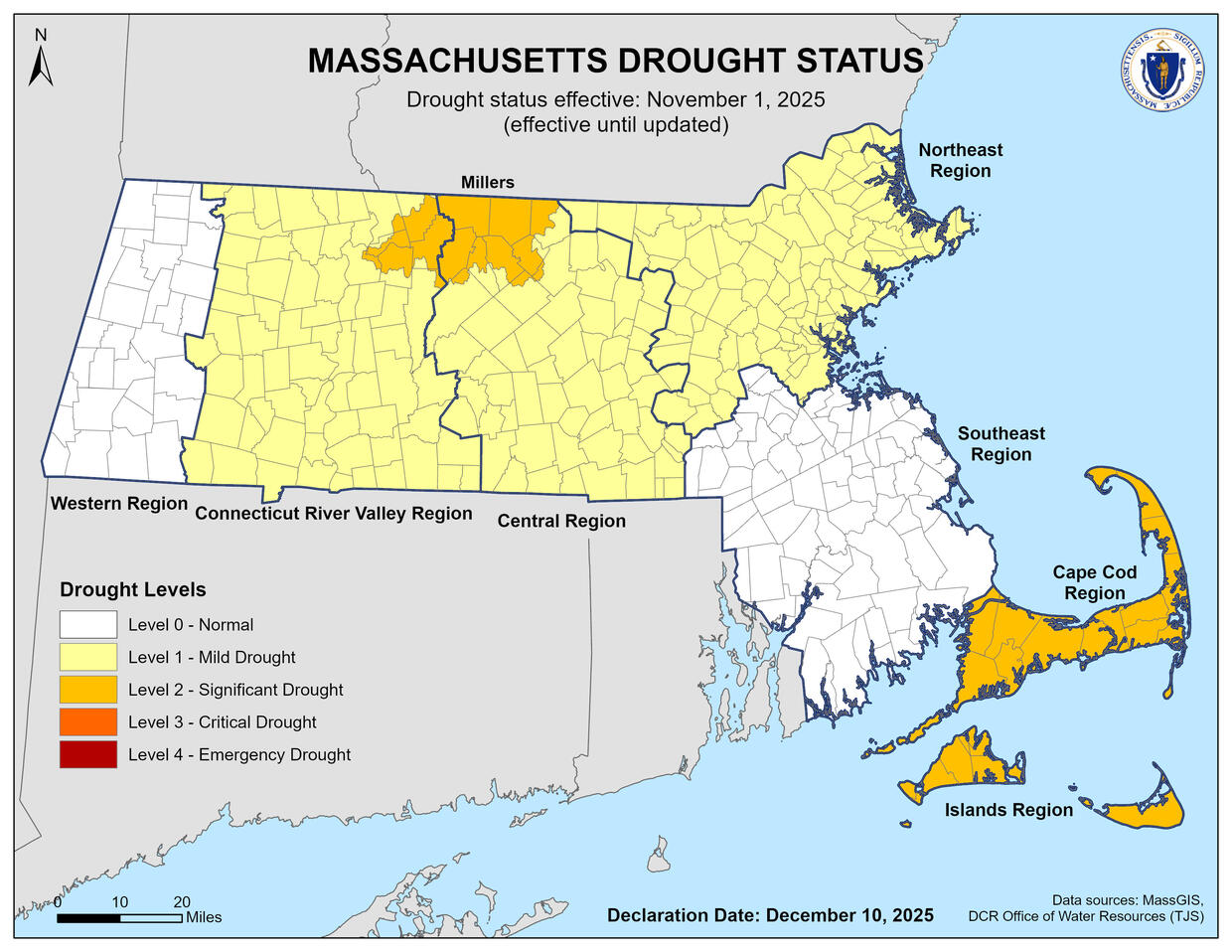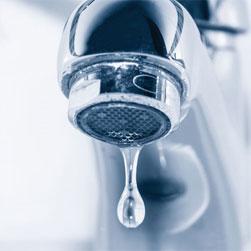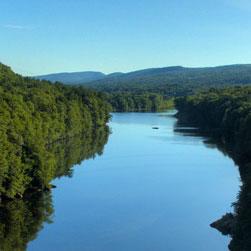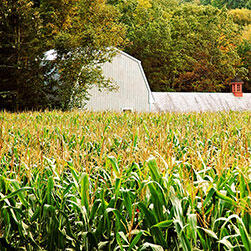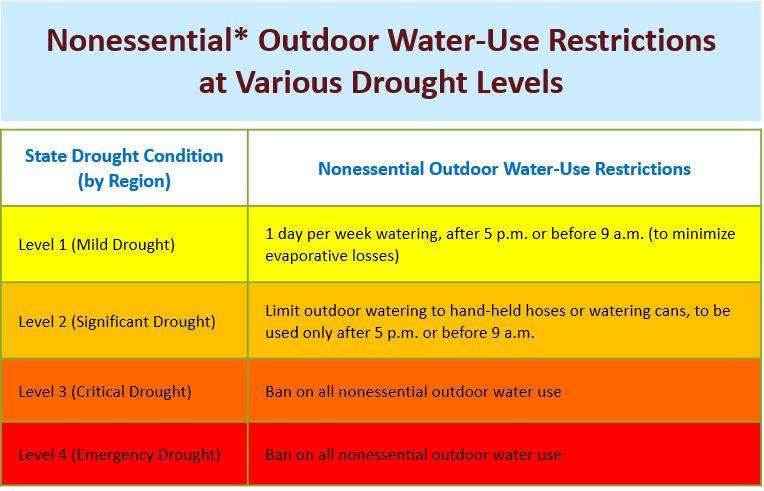*The drought levels shown in the map above are in effect until the next drought declaration
December 10, 2025:
Today, Energy and Environmental Affairs (EEA) Secretary Rebecca Tepper declared the Western Region has returned to Normal Conditions. Drought levels remain unchanged throughout the rest of the Commonwealth with the Cape Cod and Islands Regions, and Millers Basin at a Level 2–Significant Drought; the Northeast, Central and Connecticut River Valley Regions at a Level 1–Mild Drought; and the Southeast Region at Normal Conditions.
During November, Massachusetts received rainfall ranging from 3 to 5 inches, with the Cape and Islands Regions seeing the highest totals. However, when looking back over the past 3 to 6 months, many areas still show deficits in precipitation. The forecasted rainfall is anticipated to bring relief to some regions of the state.
The current drought, which began in 2024, has had significant impacts on the natural environment, including the drying of streams in nearly all regions, lower water levels in lakes and ponds, resulting in exposed banks, and impeding fish passage out to the ocean. Watering restrictions were implemented over the summer, and the local water supplies are currently stable.
As outlined in the Massachusetts Drought Management Plan, a Level 1 – Mild Drought and Level 2 – Significant Drought require detailed monitoring of drought conditions. These levels also require ongoing coordination among state and federal agencies to implement drought response actions such as water use restrictions. Additionally, engagement with municipalities, including local Boards of Health (BOH), is essential. This includes providing technical outreach and assistance to water suppliers and affected municipalities. Residents are asked to report to their local BOH in case of wells drying up; BOHs are asked to report here on the condition of local private wells.
The Drought Management Task Force (DMTF) collected and analyzed data from August 2024 through November 2025. Residents can report dry environmental conditions and submit photos to help monitor the situation on the Massachusetts Water Impact Reporter. Additionally, a FAQ is now available for questions regarding the current drought status and water conservation; and private well owners can go here for information on how the drought may impact them.
State agencies will continue to closely monitor and assess conditions across the state, coordinate any needed dissemination of information to the public, and help federal, state, and local agencies prepare additional responses that may be needed in the future. The DMTF will meet again on Friday, January 9th at 9:30am. For further information on water conservation and what residents can do, visit the EEA’s drought and water conservation pages.
Below are recommendations for communities and individuals living and working within a Level 1 – Mild Drought and Level 2 – Significant Drought, including those utilizing a private well. Residents and businesses are strongly urged to check with their local water system in case more stringent watering restrictions are in place. Many systems may have other more severe local conditions and constraints on water supply.
For Regions in Level 2 – Significant Drought
Residents and Businesses:
- Minimize overall water use;
- Shut off and properly winterize sprinkler systems to avoid leaks due to freezing/thawing;
- Disconnect hoses and wrap outdoor spigots/backflow preventers
- Limit any remaining outdoor watering to hand-held hoses or watering cans, to be used only after 5 p.m. or before 9 a.m.;
- Follow local water use restrictions;
- Fix indoor leaks, such as from toilets, faucets, and showers, which result in more than 60 percent of indoor use; and,
- For larger buildings and businesses, conduct water audits to identify areas of leaks and potential water conservation opportunities.
Immediate Steps for Communities/Municipalities:
- Adopt and implement the state’s nonessential outdoor water use restrictions for Drought Level 2 which calls for limiting outdoor watering to hand-held hoses or watering cans, to be used only after 5 p.m. or before 9 a.m. If local restrictions are more stringent, continue to keep them in place during the course of the drought.
- Limit or prohibit washing of hard surfaces (sidewalks, patios, driveways, siding); personal vehicle or boat washing; and,
- Establish water-use reduction targets for all water users, identify top water users and conduct targeted outreach to help curb their use.
Short- and Medium-Term Steps for Communities/Municipalities:
- Establish a year-round water conservation program that includes public education and communication, taking advantage of the states library of outreach materials;
- Provide timely information to local residents and businesses;
- Implement or establish drought surcharge or seasonal water rates;
- Check emergency inter-connections for water supply; and,
- Develop or refine your local drought management plan using guidance outlined in the state Drought Management Plan.
For Regions in Level 1 – Mild Drought
Residents and Businesses:
- Minimize overall water use;
- Shut off and properly winterize sprinkler systems to avoid leaks due to freezing/thawing;
- Disconnect hoses and wrap outdoor spigots/backflow preventers
- Limit any remaining outdoor watering to one day per week from 5:00 p.m. to 9:00 a.m., or less frequently if required by your water supplier;
- Fix indoor leaks, such as from toilets, faucets, and showers, which result in more than 60 percent of indoor use;
- For larger buildings and businesses, conduct water audits to identify areas of leaks and potential water conservation opportunities;
- Minimize lawn sizes; and,
- Harvest rainwater for outdoor watering.
Communities/Municipalities:
- Establish a year-round water conservation program that includes public education and communication, taking advantage of the state’s library of outreach materials;
- Provide timely drought and water conservation information to residents and businesses;
- Check emergency inter-connections for water supply; and,
- Develop a local drought management plan
